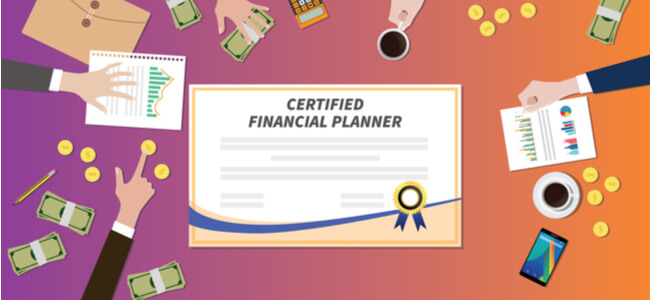Incremental Payments: Mortgage And Loan Amortization

Amortization is a simple process, although it might look complicated at first. This article will explain how it works, what loans are amortized, and how it helps you meet your goal of paying off your debts.
What Does Amortization Mean?
Amortization is paying off your mortgage or another loan in equal installments for a fixed length of time. The lender might speak to you about a 30-year term or a 30-year amortization. Both mean the same thing.
Each payment you make on your loan includes a portion that’s applied toward the interest and a portion applied to the principal. Your principal represents the amount you borrowed from the lender, exclusive of interest. Interest is the cost of procuring the loan. It’s set according to the market and your credit history. You’ll receive an amortization chart as a part of your lending documents.
How Does Loan Amortization Work?
In the beginning, the bulk of your monthly payment is applied to interest. At this stage, your progress toward reducing the principal is barely noticeable. As your loan matures, less of your monthly payment is applied to the interest, and more goes to the principal. At this point, you’ll begin to see more progress toward reducing the debt.
Your payback chart displays:
- How each payment is divided among principal and interest
- How much total interest and principal is paid by any given date
- How much you still owe on the principal on any date in the future
You’ll be able to calculate how you can pay off the loan sooner.
You can create a mortgage amortization schedule yourself by using a fintech tool. Simply plug in the amount you intend to borrow, for how many years, and the interest rate offered.
What Types Of Loan Are Amortized?
Most installment loans are amortized. However, here’s what the process looks like for other forms of debt.
- Home loans. The most common home loans are 30-year or 15-year fixed-rate. The payback scheduled is fixed. If you take out an adjustable-rate mortgage (ARM), your schedule will be more fluid since the interest rate isn’t fixed. However, most consumers today don’t reach the end of their term. Usually, the loan is refinanced or the property is sold
- Personal loans. Online lenders, banks, and credit unions offer installment loans that are usually amortized. These loans come with shorter terms, fixed interest, and monthly payments
- Auto loans. A typical auto loan comes with a repayment term of three years, although you can find them for five years or longer. Your payments are fixed over the term of paying it back
Some debts aren’t amortized:
- Credit cards
- Balloon loans
- Interest-only loans
Example Of Mortgage Amortization
This example assumes that you took out a 25-year mortgage loan in the amount of $350,000 with an interest rate of 3.5%. Monthly payments will be $1,752.18 (not including insurance and taxes). Total interest paid over the life of the loan, assuming no additional payments are made, will be $175,654.71. This amount is equal to half the total borrowed.
Here’s how the first year would look:
Month | Total Due | Interest Due | Principal Due | Principal Balance |
10/1/2020 | $1,752.00 | $1,021.00 | $731.00 | $349,269.00 |
11/1/2020 | $1,752.00 | $1,019.00 | $733.00 | $348,535.00 |
12/1/2020 | $1,752.00 | $1,017.00 | $736.00 | $347,800.00 |
1/1/2021 | $1,752.00 | $1,014.00 | $738.00 | $347,062.00 |
2/1/2021 | $1,752.00 | $1,012.00 | $740.00 | $346,322.00 |
3/1/2021 | $1,752.00 | $1,010.00 | $742.00 | $345,580.00 |
4/1/2021 | $1,752.00 | $1,008.00 | $744.00 | $344,836.00 |
5/1/2021 | $1,752.00 | $1,006.00 | $746.00 | $344,089.00 |
6/1/2021 | $1,752.00 | $1,004.00 | $749.00 | $343,341.00 |
7/1/2021 | $1,752.00 | $1,001.00 | $751.00 | $342,590.00 |
8/1/2021 | $1,752.00 | $999.00 | $753.00 | $341,837.00 |
9/1/2021 | $1,752.00 | $997.00 | $755.00 | $341,082.00 |
10/1/2021 | $1,752.00 | $995.00 | $757.00 | $340,324.00 |
How Does Loan Amortization Help You?
The amortization schedule empowers you to make more informed decisions. Reviewing the payment schedule before taking out a loan helps you weigh the pros and cons of taking out a 30-year mortgage versus a 25-year or a 15-year term.
One of the more striking aspects of the schedule is that you’ll see the total amount of interest you’ll have paid by the time you arrive at the end of your loan term. This might be an incentive to make additional payments toward the principal. However, check first to be sure that its terms don’t include a prepayment penalty.
Bottom line
Before signing a mortgage or other personal loan, it’s essential to carefully read the documents provided by your lender. You’ll receive information related to the total amount of principal and your interest rate. You can track how much of your monthly payment is going toward interest and how much is going toward the balance. You’ll also see the total amount of interest you’ll pay over the life of your loan.
Now that you’re equipped with the amortization definition, make sure to review your loan payback schedule. It can be a useful tool to help you get out of debt sooner.



